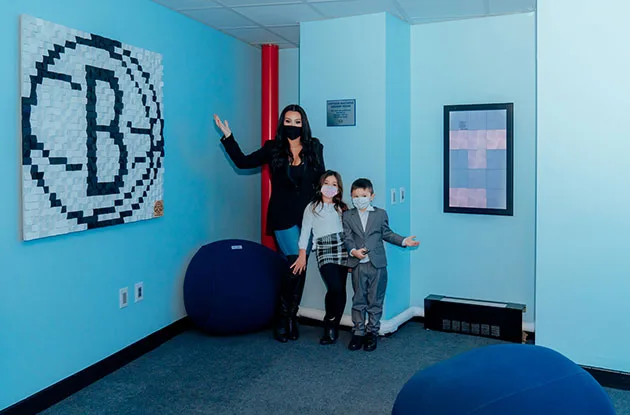The theme changes yearly, but the goal remains the same. Since 1993, when the Ms. Foundation for Women launched the first Take Our Daughters to Work Day, the philanthropic institution has been reaching out to the public to promote gender equality and a balance between family and career in the workplace. So every year, on the fourth Thursday in April, men and women across the country are encouraged to bring children, whether their own or those of family and friends, to work, for a closer look at what goes on in America’s workplaces.
In April 2003, the foundation expanded its national public education program by changing the scope of the program to include boys and the first Take Our Daughters and Sons to Work Day was born. According to Sara K. Gould, the foundation’s president and CEO, before the program change, girls asked, “Can I have a family and work here, too?” Gould says, “The Ms. Foundation for Women wants both girls and boys to come into the workplace and ask that question and start a dialogue with workplaces so they can have a family and work there.” She adds, “Our children watch the adults in their lives struggling to balance their work and family lives and want to envision their futures differently.”
This year’s theme, “Sharing Power and Possibility”, will be the focus of discussions and activities on April 28. Workplace planning committees have been brainstorming ways to implement the theme in order to keep children interested and engaged in the day’s activities.
Kelley Schultz, a public affairs manager for Fidelity Investments in Manhattan, says this year’s lineup of events is the result of the efforts of a 14-member volunteer group that closely follows the suggested guidelines of the Ms. Foundation. “We tap into all their resources, their theme and supplies,” she says.
In 2004, both the Jersey City, N.J. and Manhattan offices participated for the first time. They hosted 40-45 children, all within the 8-12 age range. This year, Schultz expects an increase in visitors due in part to word-of-mouth popularity, and also last year’s success. Presentations last April focused on finding a balance between career and family life, says Schultz, but children also had a chance to see their parents or hosts busy at work. For children who came with a parent, they were treated to an inside look at “a day in the life of mom and dad,” Schultz says.
As for the foundation’s inclusion of boys to the program in 2003, Schultz feels. “It was a very good decision. Men and women work together.” It is important for children, male and female alike, to see that interaction in the workplace, Schultz says.
Gould says the yearly event allows kids more than just the opportunity to see a functioning workplace for a day, and that the lessons are numerous. She offers a breakdown of what boys and girls visiting the nation’s workplaces are exposed to. “They share their vision for their future and begin to explore job opportunities … begin to see how their studies translate into the ‘real’ world … learn what mom, dad, or their sponsor do at work … learn how to work together to achieve success … discuss the importance of balancing work and family … understand the function of the workplace and its departments, and discover themselves.”
Last year was the first time Learning Leaders participated in the event. Says Jinnie Spiegler, vice president for programs at the Park Avenue offices of the organization: “We’re a parent involvement organization, so it just makes sense to participate in the day.”
Julia Gilliam, manager of special events at Learning Leaders, brought in her two nieces, ages 10 and 12, last year. Gilliam recalls one of the exercises in which the children walked around the office introducing themselves, asking staff members about their roles within the organization. Spiegler says this year, staff members will present a panel on different departments.
Gould estimates that 14 million employed adults took a girl or boy to work in 2004, and participation runs the gamut from large to small businesses. Feedback from the workplace organizers comes via day-after surveys.
Does our country still have a long way to go as far as gender equality in the workplace is concerned? Gould’s answer is yes. According to results from a Roper poll conducted by the foundation, 61 percent of adults still believe men and women are treated differently in the workplace.
Finally, says Gould, “Our assumptions about gender roles in work and family have to change so both our nation’s daughters and sons can participate fully in all areas of their lives.”





















